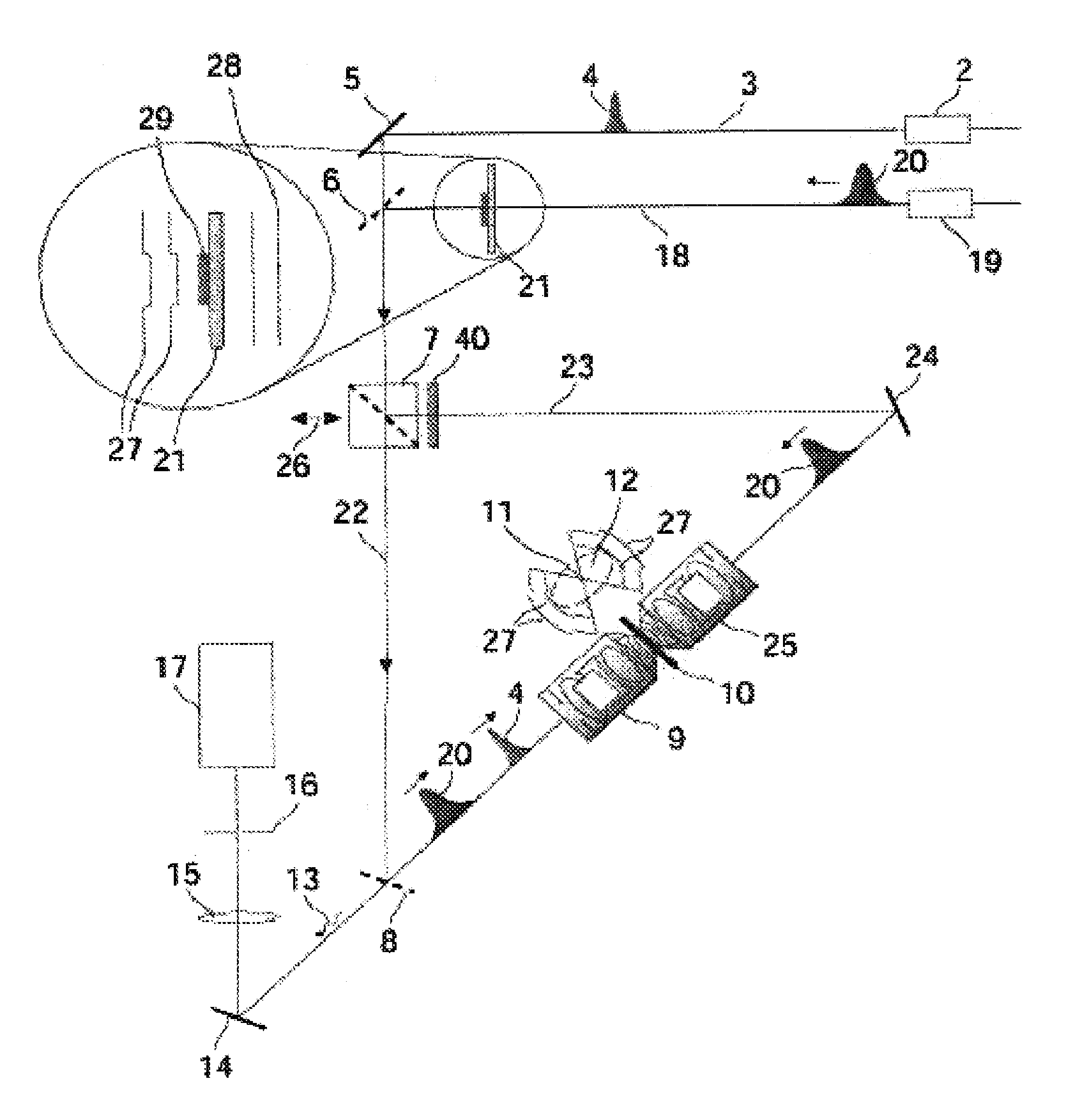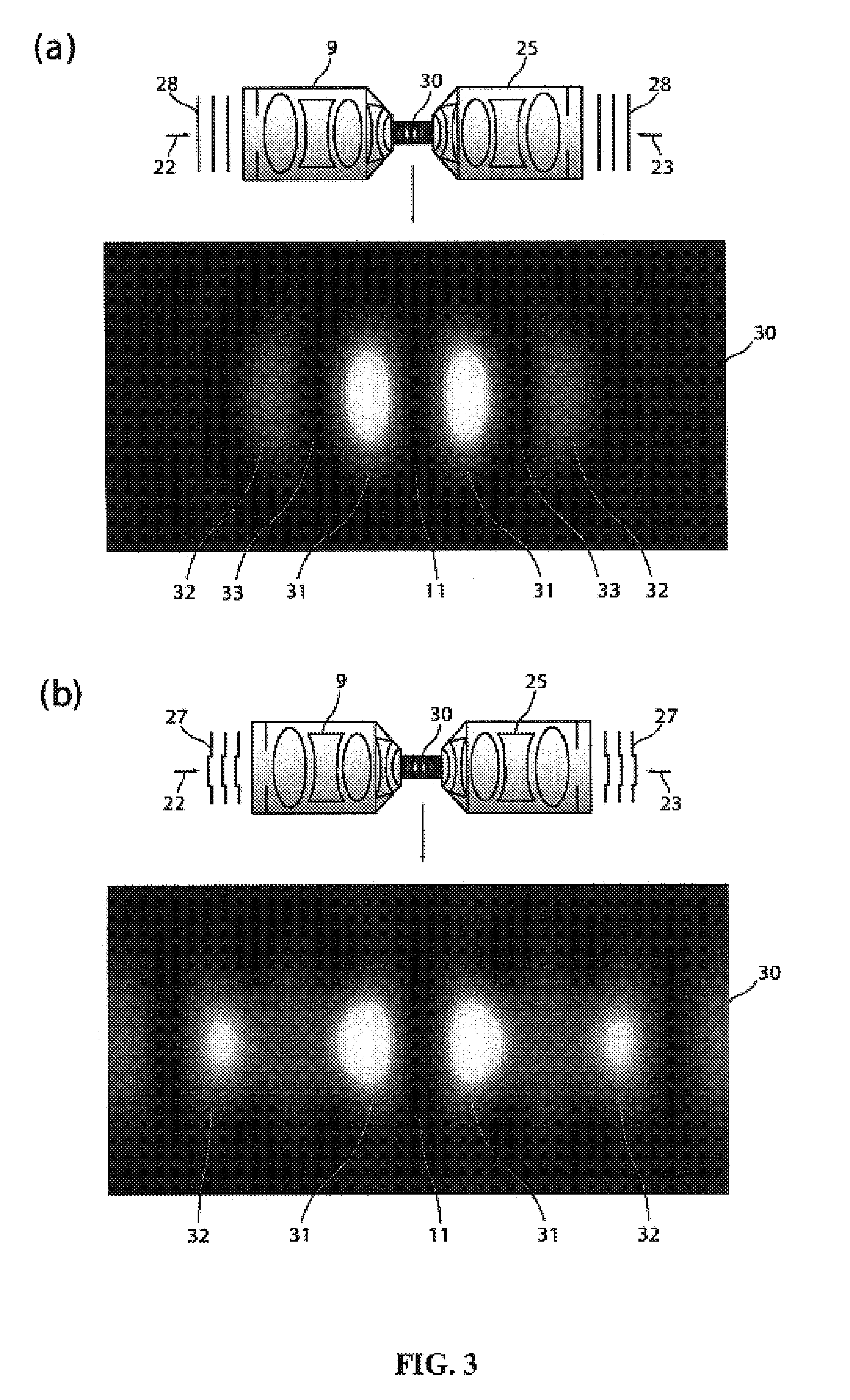Method and apparatus for spatially limited excitation of an optical transition
a technology of spatial limitation and excitation, applied in the direction of optical radiation measurement, fluorescence/phosphorescence, instruments, etc., can solve the problem of limiting the application of stimulation light to those cases in which the stimulation light has twice the wavelength of the excitation light, and the apparatus for the realization of this method requires extremely high alignment efforts
- Summary
- Abstract
- Description
- Claims
- Application Information
AI Technical Summary
Benefits of technology
Problems solved by technology
Method used
Image
Examples
Embodiment Construction
[0046]Referring now in greater detail to the drawings, the apparatus 1 schematically depicted in FIG. 1 comprises an excitation light source 2 providing an excitation light beam 3. The excitation light source 2 provides laser pulses 4 having a wavelength of 554 nm and a pulse duration of 250 fs. The excitation light beam 3 is directed into a first lens system 9 via a mirror 5, through a first dichroic mirror 6 and a beam splitter 7 as well as via a second dichroic mirror 8, and is then focused by the lens system 9 in the area of a sample 10 onto a focal point 11 which is depicted here in an enlarged detail picture besides the sample 10. A partial beam split off from the excitation light beam 3 in the beam splitter 7 is blocked by a wavelength selective element 40 which has no transmission for light having the wavelength of the excitation light beam 3. Because of the diffraction barrier, the excitation light beam 3 is actually not only focused into the zero-dimensional focal point 11...
PUM
| Property | Measurement | Unit |
|---|---|---|
| half aperture angle | aaaaa | aaaaa |
| angle | aaaaa | aaaaa |
| wavelength | aaaaa | aaaaa |
Abstract
Description
Claims
Application Information
 Login to View More
Login to View More - R&D
- Intellectual Property
- Life Sciences
- Materials
- Tech Scout
- Unparalleled Data Quality
- Higher Quality Content
- 60% Fewer Hallucinations
Browse by: Latest US Patents, China's latest patents, Technical Efficacy Thesaurus, Application Domain, Technology Topic, Popular Technical Reports.
© 2025 PatSnap. All rights reserved.Legal|Privacy policy|Modern Slavery Act Transparency Statement|Sitemap|About US| Contact US: help@patsnap.com



